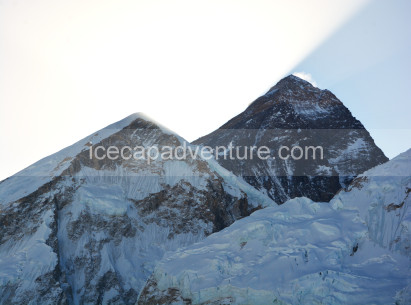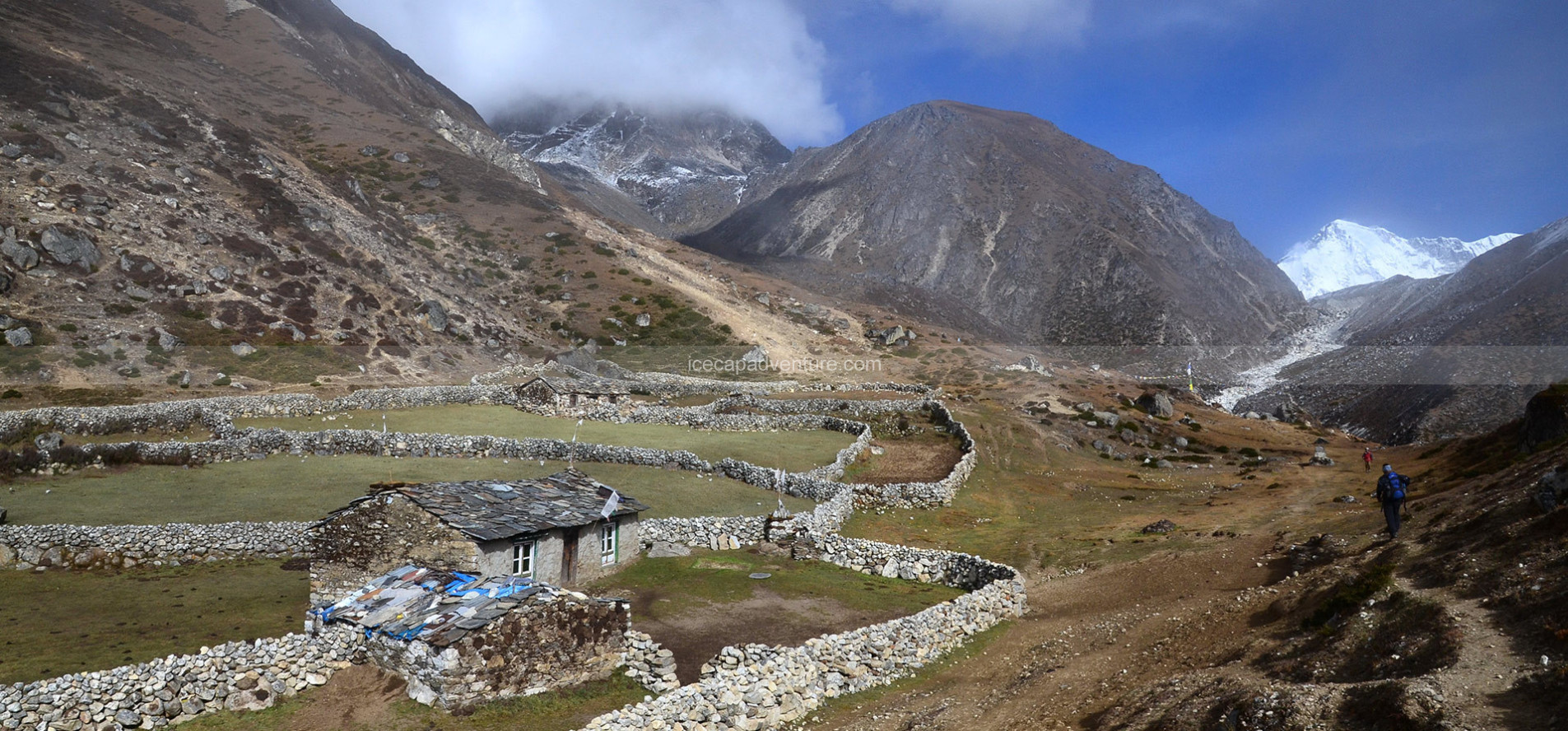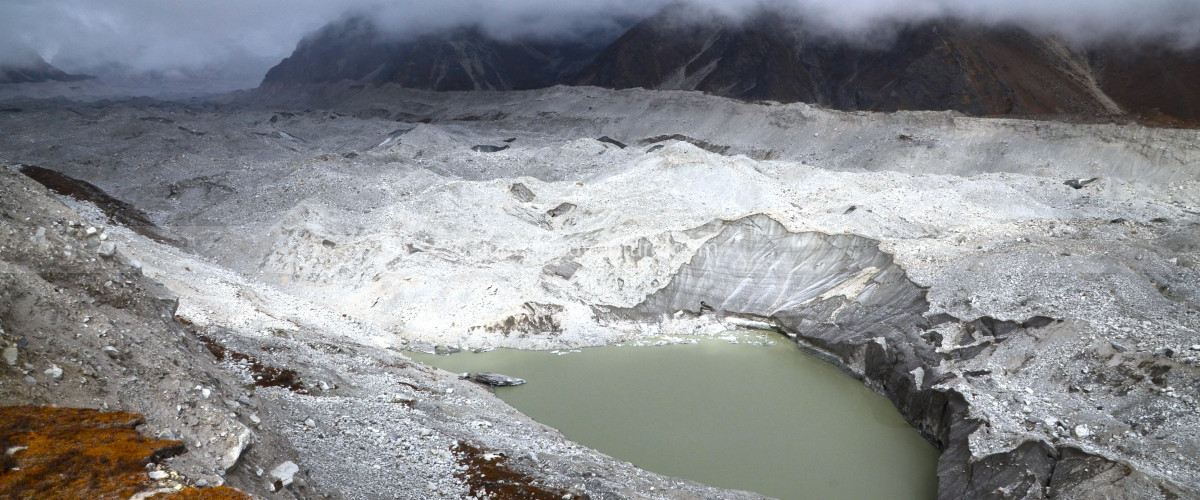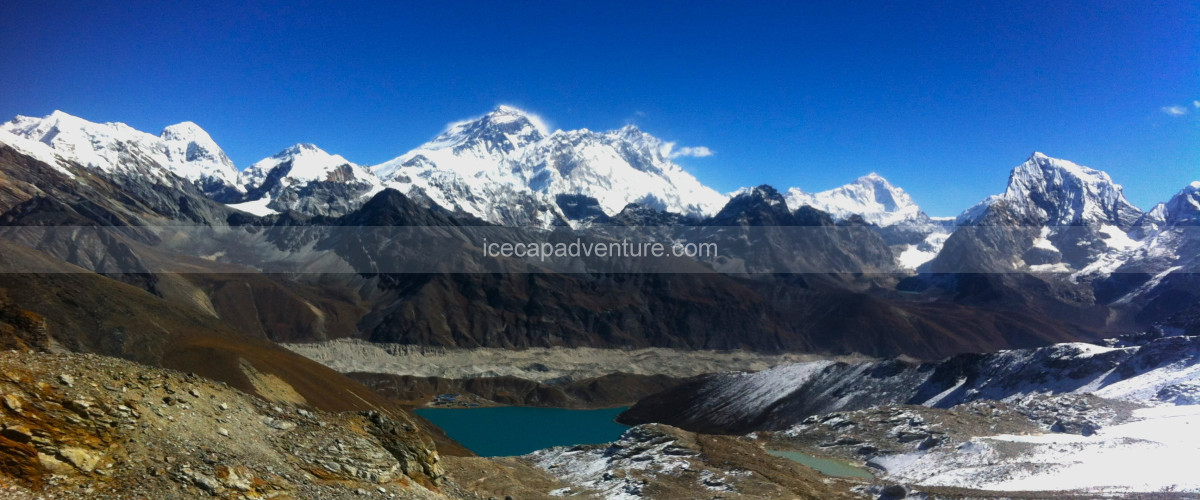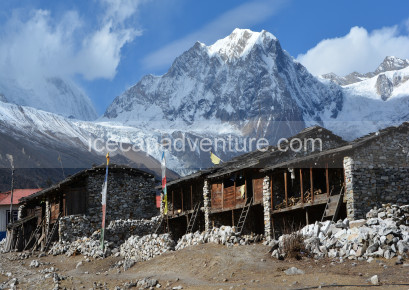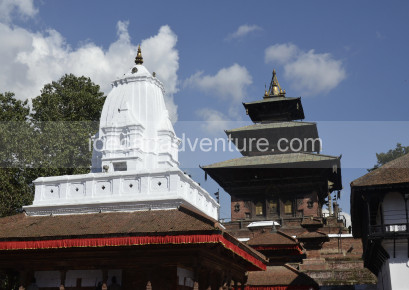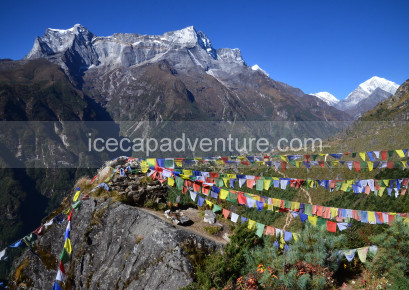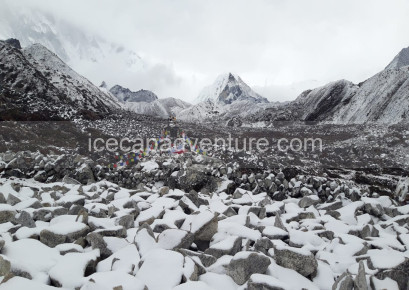.png)
.png)
.png)
.png)
.png)
.png)
.png)
.png)
.
1
Te estaremos esperando en el aeropuerto de Katmandú y te recibiremos con el tradicional collar de flores nepalí como símbolo de bienvenida a Nepal. Luego, continuaremos en vehículo desde el aeropuerto hasta el hotel, lo cual tomará aproximadamente 30 minutos durante el día o 20 minutos por la noche. Al llegar al hotel, te ofrecerán una bebida de bienvenida con galletas y luego podrás instalarte en tu habitación. Después de instalarte, deberás volver al vestíbulo para una charla informativa sobre el trekking y una presentación con tu guía de montaña. Una vez terminada la charla, revisarás tu equipo de trekking o escalada con el guía. Si llegas a Katmandú por la noche, todas estas actividades se realizarán al día siguiente después del desayuno.
.png)
.png)
.png)
.png)
2
Today is dedicated to final preparations for your Gokyo Lake – Renjo La Pass Trek. After breakfast, your trekking guide will meet you for a briefing about the upcoming journey, including details on the route, weather conditions, altitude considerations, and essential gear. This is also the perfect time to check your trekking equipment, ensuring you have all the necessary clothing, accessories, and personal items for the adventure ahead.
You’ll have the rest of the day free to shop for any last-minute trekking gear or supplies in Thamel, Kathmandu’s bustling traveler hub. Here, you can find high-quality outdoor equipment, warm clothing, and other essentials at reasonable prices.
In the evening, you can enjoy a traditional Nepali dinner and get a good night’s rest, ready to begin your scenic Himalayan journey to the beautiful Gokyo Lakes and Renjo La Pass the following day.
Highlights of the Day
-
Trek briefing and preparation with your guide
-
Check and organize trekking gear and equipment
-
Last-minute shopping in Thamel, Kathmandu
-
Explore Kathmandu’s vibrant local culture and markets
-
Enjoy a traditional Nepali meal before your trek begins
.png)
.png)
.png)
.png)
3
.
.png)
.png)
.png)
.png)
4
.
.png)
.png)
.png)
.png)
5
.
.png)
.png)
.png)
.png)
6
.
.png)
.png)
.png)
.png)
7
.
.png)
.png)
.png)
.png)
8
.
.png)
.png)
.png)
.png)
9
Así como Gorak Shep tiene Kala Pattar, Gokyo tiene Gokyo Ri. No afectado por el terremoto, el camino hacia la cima cruza un arroyo en el extremo norte del pueblo y asciende durante dos horas hasta la cima de la colina. Al igual que con Kala Pattar, el clima más confiable es temprano en la mañana, ya que las nubes tienden a llegar hacia media mañana. La sabiduría popular es comenzar la subida a la montaña a primera luz, incluso si parece nublado. Si el clima está despejado, tendrás mejor luz por la tarde que temprano en la mañana. Algunas personas disfrutan viendo el atardecer desde la cima.
.png)
.png)
.png)
.png)
10
.
.png)
.png)
.png)
.png)
11
.
.png)
.png)
.png)
.png)
12
.
.png)
.png)
.png)
.png)
13
.
.png)
.png)
.png)
.png)
14
.
.png)
.png)
.png)
.png)
15
.
.png)
.png)
.png)
.png)
16
After breakfast at your hotel, you’ll be transferred to Tribhuvan International Airport for your onward flight. This marks the conclusion of your memorable Nepal journey, whether it included trekking, cultural tours, or wildlife adventures.
During the drive to the airport, you can reflect on the majestic mountains, vibrant cities, ancient temples, and serene landscapes you experienced throughout your trip. Smooth airport check-in ensures a stress-free departure, allowing you to focus on the unforgettable memories you’ve created.
As you leave Nepal, you carry with you the beauty, culture, and hospitality that make this country a once-in-a-lifetime destination.
Highlights of the Day
-
Hotel transfer to Tribhuvan International Airport
-
Reflect on your Nepal journey and experiences
-
Smooth check-in for your flight home or onward travel
-
Farewell to Nepal’s mountains, culture, and people
.png)
.png)

¿No encontraste lo que estabas buscando?
¿Por qué no planificar tu propio viaje? Solo toma 2 minutos.- Recogida en el aeropuerto y traslado al hotel.
- Todo el alojamiento en Katmandú, Lukla y durante el trekking.
- Comidas en régimen de pensión completa durante el trekking, como: desayuno, almuerzo y cena.
- Adecuadamente, 3 veces té y café o cualquier bebida caliente disponible.
- Equipo de apoyo completo con 1 porteador por cada 2 excursionistas.
- Guía profesional experimentado y porteadores.
- Seguro completo para el guía y el porteador.
- Billete de vuelo nacional de Katmandú a Lukla y de regreso a Katmandú.
- Mapa de trekking y cuaderno.
- Todo el transporte con aire acondicionado de lujo desde el punto de inicio hasta el final del viaje.
- Tarifa de entrada al parque nacional y tarjeta TIMS o permiso de trekking, lo que sea necesario.
- Saco de dormir de plumón (-20), debe ser devuelto después de completar el trekking.
- Botiquín de primeros auxilios para el personal.
- Certificado de logro de trekking después de completar las caminatas.
- Billetes de vuelo internacionales, seguro de viaje y tarifas de visa de entrada a Nepal.
- Almuerzo y cena en Katmandú.
- Todas las bebidas alcohólicas tales como: agua mineral, whisky, ron, cola, fanta, etc.
- Tarifas de entrada adicionales como: museo, monasterio, templo, paseo en bote, etc.
- Equipo personal
- Gastos personales como ducha caliente y carga de batería / wifi.
- Noche extra de hotel en Katmandú si se llega tarde o se sale antes de lo previsto en el itinerario.
- Cualquier evacuación de emergencia y costos adicionales debido a circunstancias desfavorables como mal tiempo.
- Propinas personales para el personal de trekking.


✅ Clothing
-
Base Layers (Thermal Tops & Bottoms)
-
Trekking Shirts (Long & Short Sleeves)
-
Fleece Jacket / Warm Mid-layer – For insulation.
-
Down Jacket – Essential for nights above 3,500m.
-
Waterproof & Windproof Jacket (with hood).
-
Trekking Pants (lightweight, quick-drying).
-
Warm Trekking Pants (for high altitude).
-
Waterproof Pants (for rain/snow).
-
Underwear – Comfortable, quick-dry.
-
Sports Bras (for women).
✅ Head & Hand Wear
-
Warm Hat / Beanie and Sun Hat / Cap.
-
Buff / Neck Gaiter / Scarf.
-
Sunglasses and Gloves 2 pairs
✅ Footwear
-
Trekking Boots – Sturdy, waterproof, broken-in.
-
Lightweight Shoes / Sandals – For camp/teahouse.
-
Warm Trekking Socks – At least 4–5 pairs.
✅ Sleeping & Bags
-
Sleeping Bag (Down -15°C) and Liner.
-
Duffel Bag (carried by porter).
-
Daypack (30–40L) – For personal items.
-
Rain Cover for Backpack.
✅ Trekking Gear
-
Trekking Poles & Gaiters – For snow or muddy.
-
Headlamp (with extra batteries).
-
Water Bottles (2–3 liters) and Water Purifications.
-
Personal First Aid Kit
-
Snacks / Energy Bars / Dry Fruits.
✅ Accessories & Personal Items
-
Sunscreen (SPF 30–50) and Lip Balm with SPF.
-
Toiletries and Hand Sanitizer.
-
Towel (quick-dry) and Toilet Paper
-
Camera / Power Bank / Solar Charger.
✅ Documents & Money
-
Valid Passport and Visa.
-
Travel Insurance (cover high-altitude & helicopter rescue).
-
Cash (Nepali Rupees) – For personal expenses.
Good to Know – Gokyo Lake & Renjo La Pass Trek
-
Best Seasons to Trek:
The Gokyo Lake and Renjo La Pass Trek is best done in spring (March–May) and autumn (September–November). These seasons offer clear skies, stable weather, and breathtaking mountain views. Winter brings extreme cold and snow, while monsoon (June–August) may cause slippery trails and poor visibility. -
Altitude Awareness:
The trek reaches a maximum altitude of around 5,360 meters at Renjo La Pass, so proper acclimatization is crucial to avoid acute mountain sickness (AMS). Rest days in Namche Bazaar or Dole are essential for safe altitude adjustment. -
Physical Fitness:
This trek is moderate to challenging, suitable for trekkers with good physical fitness and some prior trekking experience. Daily walking ranges from 5–8 hours, often on steep ascents and rocky paths, especially during the Renjo La Pass crossing. -
Permits Required:
Trekkers need a Sagarmatha National Park Entry Permit and a TIMS (Trekkers’ Information Management System) card, both obtainable in Kathmandu or at the park entrance in Monjo. -
Accommodation and Meals:
Accommodation is in teahouses and lodges with basic facilities. Rooms are simple, usually with shared bathrooms, and meals include dal bhat, noodles, soups, rice, potatoes, pancakes, and tea/coffee. Food variety decreases and prices rise at higher altitudes. -
Drinking Water:
Water can be purchased at lodges or refilled from local sources. Use water purification tablets or filters as tap or stream water may not be safe to drink. Staying well-hydrated helps prevent altitude sickness. -
Packing and Gears:
Essential gear includes sturdy trekking boots, layered warm clothing, down jacket, gloves, hat, sunglasses, trekking poles, sleeping bag (-10°C), sunscreen, power bank, headlamp, and a small first aid kit. Proper footwear and warm gear are crucial for the Renjo La crossing. -
Flight and Transportation:
The trek begins with a short scenic flight from Kathmandu to Lukla, then follows the route through Phakding, Namche Bazaar, Dole, Machhermo, Gokyo, and Renjo La Pass, descending through Thame and finally back to Namche Bazaar before returning to Lukla. The trail features turquoise lakes, glaciers, Sherpa villages, and majestic views of Everest, Cho Oyu, and Makalu. -
Travel Insurance:
Comprehensive high-altitude trekking insurance is strongly recommended, covering medical emergencies, evacuation by helicopter, and trip delays. -
Connectivity and Charging:
Mobile networks are available in major villages like Namche Bazaar and Gokyo, though limited beyond that. Lodges often provide charging facilities for a small fee, so bringing a power bank or solar charger is helpful. -
Highlight Experience:
The Gokyo Lake & Renjo La Pass Trek is a serene and scenic alternative to the classic Everest Base Camp route, offering stunning Himalayan panoramas, tranquil turquoise lakes, and a thrilling high mountain pass crossing. It’s perfect for trekkers seeking less crowded trails with spectacular views and authentic Sherpa culture.

